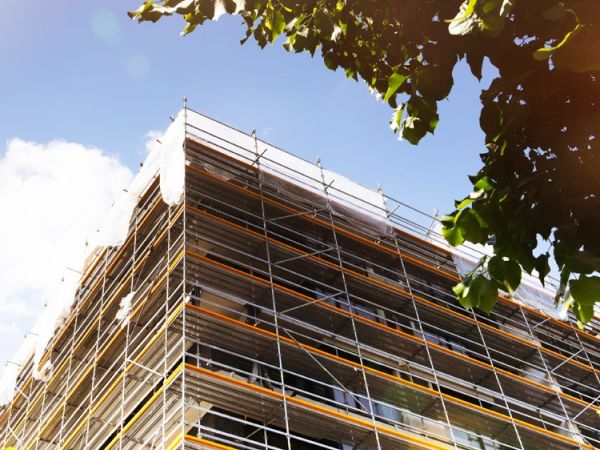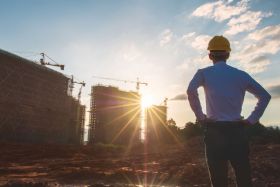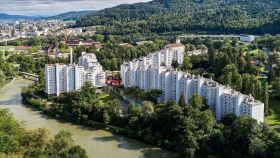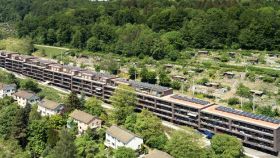

The white paper provides property owners with comprehensive information on energy-efficient renovations:
- The first part of the publication provides an overview of the economic, ecological and social potentials and answers questions regarding urgency, the legal framework, benefits and opportunities.
- The second part explores the topic in more detail and presents measures for the building shell and technology, as well as various renovation solutions and implementation examples.
Buildings in Switzerland account for about a quarter of its greenhouse gas emissions. The main reason for this is the use of fossil fuels. Around 60 per cent of homes still use fossil fuels for heating and hot water. In addition, a good two-thirds of residential buildings in Switzerland date from before 1980. Many of them are insufficiently insulated and no longer meet today’s energy requirements. In order to reach the goals set by the federal government to reduce greenhouse gas emissions to net zero by 2050, the renovation rate in Switzerland must be at least doubled.
Energy renovations are an important lever for increasing energy efficiency in operations and conserving resources. Forward-looking renovations reduce marketing and vacancy risks and increase attractiveness for investors, as sustainability criteria increasingly influence investment decisions. However, renovations are also valuable from an architectural point of view, as they contribute to the preservation of historical buildings. Institutional ownership plays a key role in reducing the environmental and climate impact in the building sector, as it owns around 40 per cent of homes in Switzerland.
Legal framework and financing
The federal government’s climate strategy and the Energy Strategy 2050 form the framework for energy renovations. They aim to reduce greenhouse gas emissions to net zero by 2050 and reduce energy-related environmental impact. Implementation is the responsibility of the cantons, which have paved the way for the harmonisation of cantonal regulations with their model energy sector regulations for the cantons (MuKEn).
In Switzerland, sustainable energy solutions receive financial support from the federal government, cantons and municipalities. For example, the federal government supports the construction of photovoltaic systems with one-off payments and supports efficiency measures to reduce electricity consumption. With the building programme, the federal government and the cantons are helping to finance measures that reduce energy consumption and greenhouse gas emissions. The energiefranken.ch portal lists all available funding programs for private individuals, companies and the public administration. In addition, banks often grant preferential loans for environmentally friendly renovations. We also offer various financing models that reduce risks related to investment and operation.
Comprehensive analyses provide environmental and economic advantages
Portfolio, status and potential analyses provide owners and investors with a sound basis for making decisions. They show the energy-saving potential and the possibilities for an efficient renewable energy supply. With a lifecycle analysis (LCA) regarding life cycle costs (LCC), the environmental impact and economic impact over a building’s entire lifecycle can be determined. Both are a good basis for keeping the costs of structural measures and environmental impact as low as possible. Labels can also be used for quality assurance. At a national level, these include, for example, GEAK/GEAK Plus, Minergie and SNBS. There are also international labels such as DGNB, LEED and BREEAM.
Far-sighted renovation strategies with specific targets help to improve the energy performance of properties, increase their value and increase their user comfort. The desired energy standard and long-term use are key factors in the extent of the renovation work. As energy-efficient renovations are complex, an interdisciplinary approach is required. Integrated project delivery (IPD) and integrated planning (IP) are proven methods for efficient renovations and involve clients, planners and contractors in the process at an early stage.
Decisive factors for the evaluation of the strategy – complete or partial renovation with or without expansion – are the condition of the building stock as well as criteria such as market and expansion potential. It is important to define the renovation measures for each property individually. When it comes to building technology, the focus is on facility operation: renewable instead of fossil fuels. The production of solar power, including electromobility, may also be a good option. Energy service providers like ewz have specific tools for harnessing potential savings in energy management.
Experts recommend energy renovations where a building has been earmarked for modernisation anyway. A replacement heating system in a poorly insulated building should ideally be coordinated with an energy renovation of the building shell. The following approach has proven successful:
- Analysis of the initial situation, taking into account the renovation objectives
- Feasibility study/concept/comparison of different approaches
- Renovation and implementation project
- Execution
Renovation of the building shell
When renovating the shell of a building (roof, facade, window, floor), the focus is on energy efficiency and living comfort. Insufficient insulation or any damage affects comfort and energy consumption. Since uninsulated roofs account for about 20 per cent of energy losses, roof renovations are very effective. The possibility of integrating solar modules and greenery should also be evaluated. Older windows lose around 8 per cent of heat, so replacing them quickly pays off. Insufficiently insulated facades can result in losses of up to 30 per cent. However, comprehensive facade renovations often cost a lot of time, effort and money. Insulation can also be an issue in cellars, especially if they are used as living space. If this is not the case, the insulation of the basement ceiling is usually sufficient.
Renovation of building technology
There are a variety of climate-friendly energy sources, such as lake, river or groundwater, geothermal energy, wood, air, solar energy or waste heat, which can be used either as individual solutions for properties and developments or as heating networks for several properties. As temperatures rise, cooling is also becoming an increasingly important issue. Where possible, passive cooling systems are used, as – unlike active cooling systems – they function like a refrigerator. The electricity required in the building is either purchased from the local grid provider or produced using photovoltaics on the building’s own roof or facade. In order to consume as much solar power as possible on site, a connection to self-consumption (ZEV) over several consumers is worthwhile. The purchase of solar power for electric vehicles also contributes to the profitability of photovoltaic systems.
We have many years of experience as an energy service company operating throughout Switzerland. Our experts advise decision-makers, support clients with renovations and offer comprehensive support from planning and implementation through to operation of the energy systems. We check which local and climate-friendly energy sources and technologies are available on site and how they can be combined with one another. Of course, this also applies to solutions that span buildings or plots of land. We also use tried-and-tested tools to analyse and exploit potential savings in energy management. The range of services includes energy monitoring, the identification and monitoring of optimisation measures as well as multimedia costings.


The white paper provides property owners with comprehensive information on energy-efficient renovations:
- The first part of the publication provides an overview of the economic, ecological and social potentials and answers questions regarding urgency, the legal framework, benefits and opportunities.
- The second part explores the topic in more detail and presents measures for the building shell and technology, as well as various renovation solutions and implementation examples.






